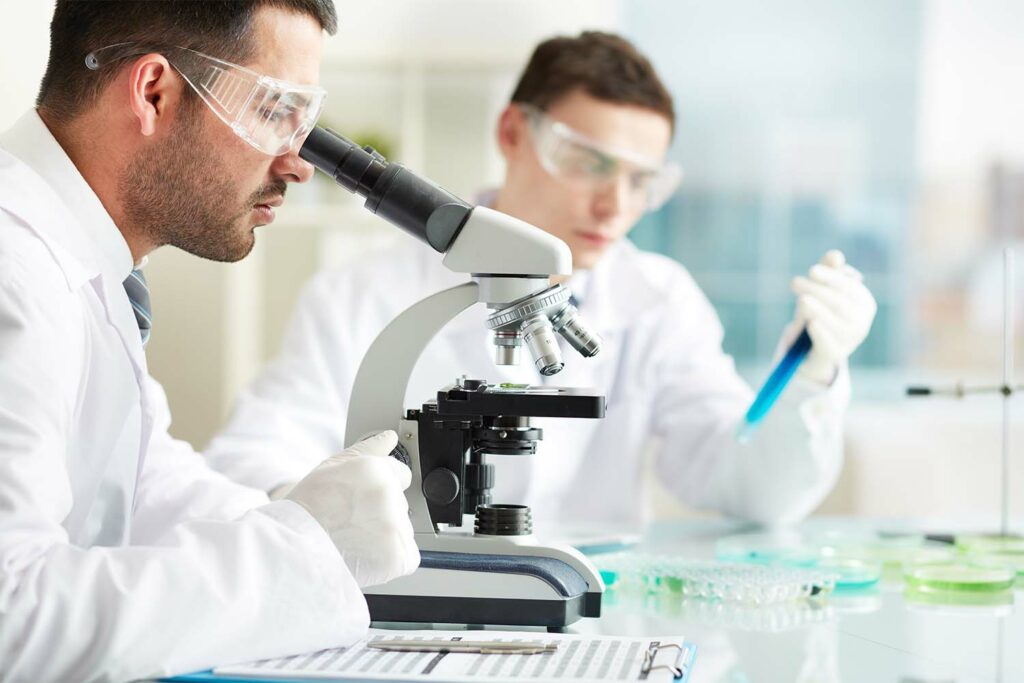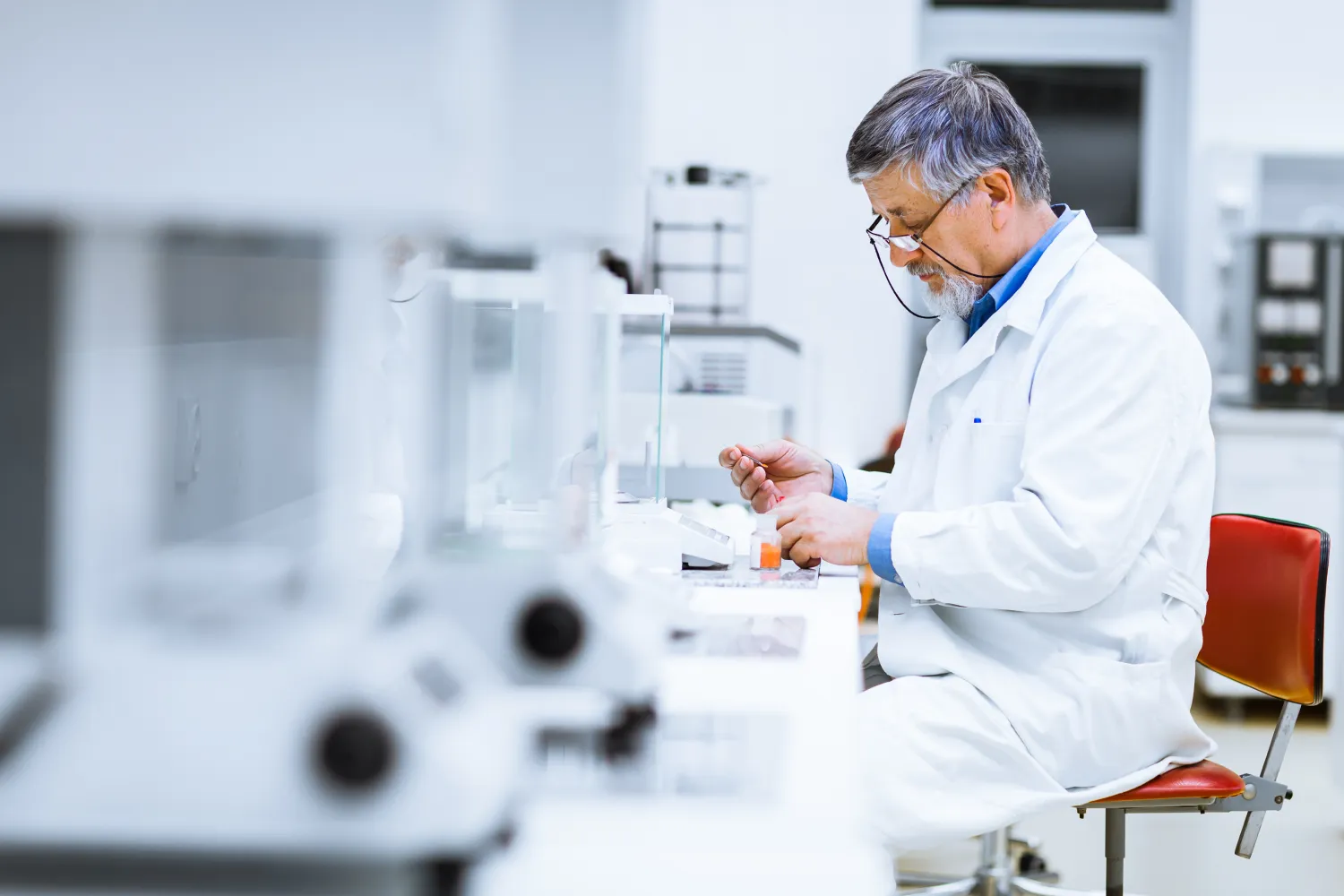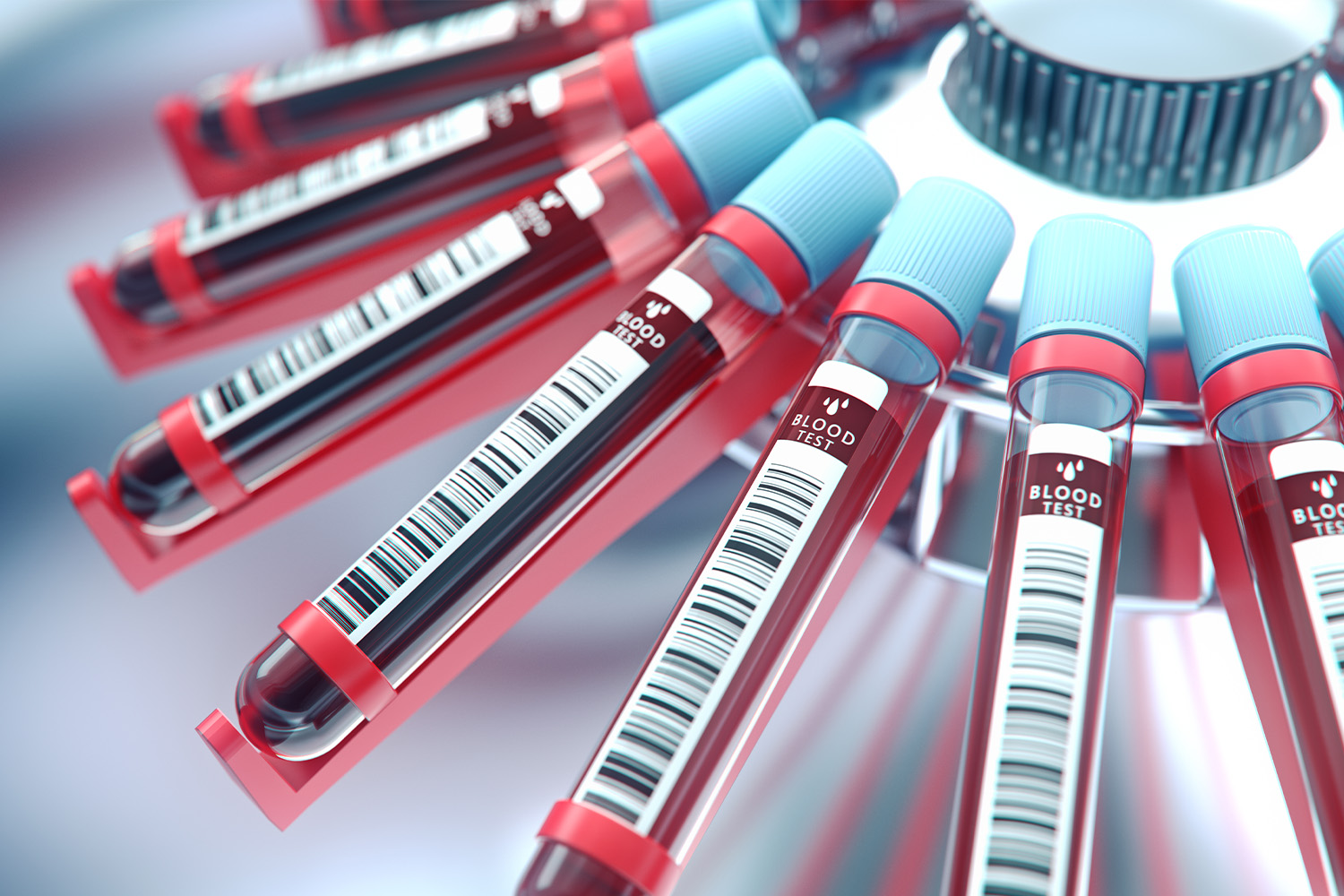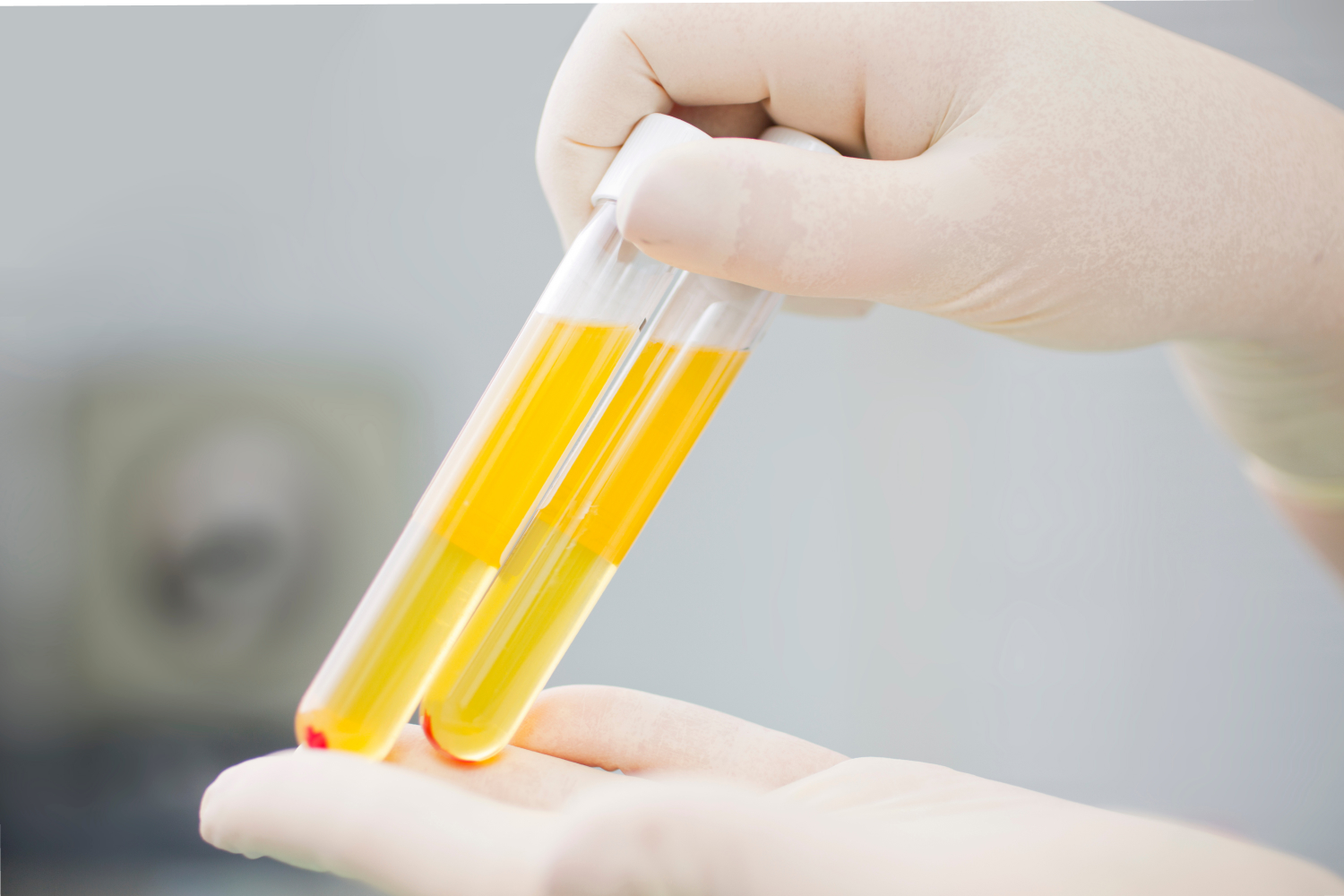
Healthcare providers, clinicians, and researchers can utilize different clinical tests to diagnose and analyze infectious diseases. These clinical tests can vary depending on the nature of the illness and the suspected pathogens.
Advancements in diagnostic technology have driven the development of different tests, such as antibody tests, antigen tests, and tests that analyze the genetic material of microorganisms. Some tests are also available as rapid diagnostic tests (RDTs).
Infectious diseases include diseases caused by bacteria, viruses, fungi, and parasites. A clinician may first evaluate a patient for initial symptoms to determine the clinical test to perform.
Other risk factors, such as medical history and past treatments, may also play a role in testing for infectious diseases.
For example, a patient that presents with a cough and sputum production may be assessed for a lung infection. After an initial evaluation, a clinician can perform a number of tests to confirm the diagnosis and manage treatment options.
Continue reading to learn more about clinical tests to diagnose infectious diseases.
Overview of Clinical Testing
Different clinical tests may be used for infectious disease diagnostics. In many cases, empiric therapy may be initiated in the case of bacterial infections before a diagnostic test is performed.
Tests to diagnose infectious diseases include:
- Culturing and examining the microorganism under a microscope
- Testing for antibodies
- Testing for antigens produced by the microorganism
- Testing for DNA or RNA, among other genetic materials, produced by the microorganism
In some cases, more than one test may be needed to fully diagnose an infectious disease. Clinicians and laboratory researchers may elect to choose a test based on the suspected organism.
A specific sequence of clinical tests may be conducted to help identify the specific organism causing the infection. After identifying the responsible microorganisms, clinicians can initiate treatment options and assess those treatment options through susceptibility and sensitivity tests.
One critical aspect of diagnostic tests for infectious diseases is the collection of biospecimens. Depending on the suspected microorganism, biospecimens may be collected as blood, urine, and stool samples. Throat swabs and lumbar puncture tests may also be performed to collect biospecimen samples.
Observation Under a Microscope
Clinicians can identify microorganisms by simply observing them under a microscope. Assessing microorganism samples under a microscope can be done through the use of stains.
For example, bacteria can be identified through specific Gram stains as gram-positive or gram-negative. The microorganism may then be identified by its shape, color, or size. The use of a microscope has limitations. For example, a standard microscope can’t be used to identify viruses. In addition, some microorganisms may look alike and can be hard to distinguish.
In many cases, there may be too few microorganisms to observe under a microscope with a single biospecimen sample. In these cases, it is vital to grow the microorganisms in a laboratory culture.
The sample can be placed in a sterile dish or test tube with certain nutrients to allow the growth of the microorganism. Culturing may not be effective for diagnosing infections caused by all types of microorganisms, as some microorganisms may grow slowly or not grow at all.
Once enough are obtained, the microorganisms can be examined under a microscope or undergo susceptibility and sensitivity testing.
Susceptibility and Sensitivity Tests
Due to the growing resistance of microorganisms against available treatment options, susceptibility testing can be necessary. Susceptibility tests allow clinicians and researchers to assess how effective a treatment option is.
Using cultures, clinicians and researchers can add the specific drug to the sample and observe how the drug kills the microorganism. They can also determine how sensitive the microorganism is to the drug or how much of the drug is needed to kill the microorganism.
Because susceptibility testing is done in a lab, the results of the testing may not represent what may occur in a clinical setting.
Antibody Tests
Antibodies are produced by the body’s immune system to fight invading microorganisms. After recognizing antigens on microorganism cells, the body’s immune system produces antibodies that attack the microorganism. It can take a few days for the body’s immune system to produce antibodies.
Antibody tests are typically performed with the use of a patient’s blood. Cerebrospinal or other bodily fluids may also be used as samples for antibody tests. Clinicians may test for several antibodies, and they may also test for the number of antibodies present in the sample.
Clinicians can identify how many antibodies are present by diluting the sample. The more dilutions that are needed, the higher the number of antibodies present in the sample.
One limitation of antibody tests is that they may not be useful for diagnosing a current infectious disease. Antibodies can remain in the bloodstream for weeks or months after the infection has resolved. Therefore, antibody test results may only indicate that a patient has been infected by the microorganism in the past. As a result, a positive antibody test may only signify a previous infection and not a current infection.
Another limitation is that it can take days or weeks for the body’s immune system to produce antibodies after being infected. Clinicians may choose to perform an initial antibody test at the onset of symptoms and then another test after symptoms have developed to determine whether an infection is active or current.
Antigen Tests
Antigens are substances usually found on the surface of microorganisms, although they can also be found within the cells or microorganisms. These substances are what trigger an immune response in the body and can signify an active infection. Like antibody tests, antigen tests are often performed with a patient’s blood, sputum, or fluid sample.
Antigen tests are effective for prompt infectious disease diagnostics, as clinicians don’t have to wait for the body’s production of antibodies. Antigen tests may also be useful for diagnosing infections quickly in people who are unable to produce antibodies due to being immunocompromised. Patients who have AIDS or a recent organ transplant may not be able to produce sufficient antibodies for an antibody test.
An antigen test is performed by mixing the patient’s biospecimen sample with the antibodies to the suspected microorganism. Antibodies bind to specific antigens produced by the microorganism.
A positive antigen test will result from the binding of the antibody to the antigen found in the patient’s sample and indicates a current, active infection. The test typically evaluates for a specific antigen-antibody combination.
Genetic Material Tests
Nucleic acid-based tests are tests that identify microorganisms based on the genetic material produced by the microorganism, such as a virus. Genetic material tested includes deoxyribonucleic acid (DNA) and ribonucleic acid (RNA). One commonly used test for genetic material is the polymerase chain reaction (PCR) test.
With the PCR test, the genetic material of the virus is replicated in order to identify the virus. This test is specific to only one suspected virus. For example, a COVID-19 PCR test only detects COVID-19, not any other virus. Therefore, a PCR test is most effective when a clinician suspects a specific microorganism.
Another use for nucleic acid-based tests is to determine whether a microorganism is resistant to a particular drug. Resistance mutations can alert clinicians and researchers to possible causes of reduced treatment effectiveness. However, the lack of information on resistance mutations can limit the accuracy of these tests for this purpose.
In some cases, a quantitative test can be used to determine how much of the microorganism’s genetic material is present. A quantitative test is useful for establishing how well a specific treatment is working.
Other Tests
Other clinical tests to diagnose infections can be performed, such as non-nucleic acid-based identification tests. Unlike nucleic acid-based tests, non-nucleic acid-based tests do not identify microorganisms by their genetic material.
Non-nucleic acid-based identification tests may involve the use of specific substances or nutrients that allow the microorganism to grow in cultures. Certain tests may identify microorganisms by the proteins or molecular substances they produce. Other tests may identify microorganisms by the enzymes they produce, as these enzymes may be essential for the microorganism to invade host cells or spread throughout the body.
Bottom Line
Clinical tests for infectious disease diagnostics include an array of different methods, including antibody and antigen tests. The use of specific clinical tests depends on the suspected microorganism causing the infection.
An initial evaluation by a clinician can help narrow down the suspected microorganism by the symptoms and severity of the infection, as well as the location of the infection. Collecting the right biospecimen samples is also crucial for identifying the suspected microorganism.
Examining the microorganism under a microscope or conducting an antibody, antigen, or genetic-material test are common ways to diagnose infections. Because of the possibility of microorganism resistance, some treatments may not be effective. For this reason, it may be important to monitor the susceptibility and sensitivity of the microorganism to the drug.
Clinicians and researchers can choose from different test options to diagnose infections. The accuracy and specificity of the test options should be considered before usage. In addition, the costs, timeline, and other factors may need to be considered when choosing a specific test option.
Use iProcess for Clinical Testing
iProcess is launching an in-house CLIA Certified research laboratory for the clinical testing of infectious diseases. In addition, iProcess is conducting high-quality genome sequencing. Our company is a leading global supplier of biospecimens that works with various pharmaceutical, diagnostic, and research organizations.
Get in touch with us today to learn more or request a quote.
Sources:
Present and Future of Culturing Bacteria | Annual Review of Microbiology
Antimicrobial Resistance – PAHO/WHO | Pan American Health Organization
Immunodeficiency disorders | MedlinePlus Medical Encyclopedia
Biochemistry, Polymerase Chain Reaction – StatPearls | NCBI Bookshelf




